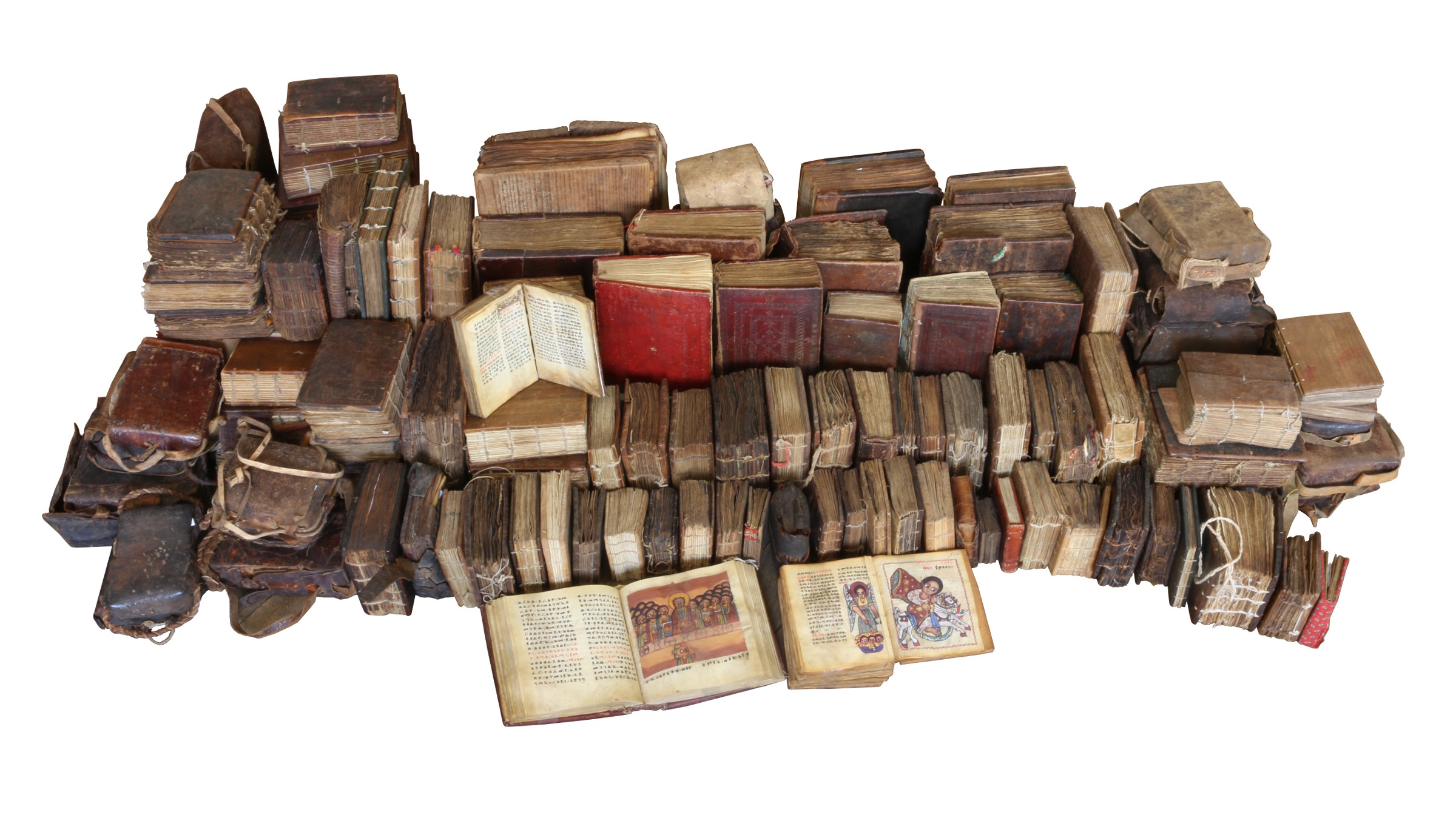[VERKAUFT]
Dieses Stück ist bereits verkauft. Am Ankauf eines gleichwertigen Exemplars bzw. von Stücken ähnlicher Bedeutung sind wir immer interessiert.
An outstandingly copious and encompassing ensemble
A collection of 108 partly illuminated codices, comprising various biblical texts, gospels, lectionaries and prayer books and 4 so-called magic scrolls.
A total of 108 manuscripts in classical Ethiopic (Ge'ez) on vellum, of which about a third are illuminated with distinctive miniature paintings, coloured borders and vignettes. All in their original, first bindings, mostly stitched between thick wooden boards, but a few early ones bound in contemporary, elaborately blindstamped morocco. 4to, 8vo and small folio.
The oldest independent country on the African continent, Ethiophia had an outstanding manuscript tradition since the early days of Christianity. One of the world's oldest Biblical manuscripts extant, only recently rediscovered in the Ethiopian monastery of Garima, dates back to the 5th century. Ethiopian manuscripts are known to have reached Europe as early as the 15th century via Egypt and Ethiopian pilgrims to the Holy Land as well as through members of the Ethiopian monastery of St Stephen of the Abyssinians in Rome. Subsequently, travellers, missionaries, military personnel and scholars contributed to the development of collections outside Ethiopia. The largest collections of Ethiopian manuscripts outside Ethiopia are in the Bibliothèque nationale de France, the Vatican Library, the British Museum, and in Princeton University Library, the latter holding some 180 separate manuscript codices. It may therefore be stated with safety that the Zemen Collection not only counts among the most extensive collections worldwide, but also is very likely - in terms of quality and of quantity - the largest still in private hands. Professor Dr. Herbert Zemen (1940-2016), who practised law for most of his lifetime and taught at Vienna University, also published extensively on art history, with a special focus on the so-called oriental school of 19th Viennese painters.
Professor Zemen began building his manuscript collection as early as the 1970s, but numerous five-figure acquisitions were made in the late 1990s (mostly at German auction houses, a few of whose original invoices are still inserted among the codices). We acquired the collection in Vienna in 2017 directly from Zemen's descendants.
The manuscripts in the Zemen Collection are chiefly written in Ge'ez, the sacred language of the Ethiopian Orthodox Church, with small portions of text in Amharic. They include gospel books, psalters, the Book of Enoch, homilies, liturgies, chants, saints' lives and miracles as well as compilations of texts related to divination and popular magic. About a dozen manuscripts are illuminated in the Second (or late) Gondar style, which emerged in the old imperial capital of Gondar in northern Ethiopia in the 1720s and 1730s.
The magic scrolls or so-called "magico-medical scrolls", of which the Zemen collection holds four examples, also contain liturgical texts and were supposed to eliminate illness by purging evil spirits and demons from a sick person. A pan-religious phenomenon practiced among Jews, Christians, and Muslims in the northern regions of Amhara and Tigray, the scrolls restore health by utilizing written words and talismanic images imbued with magical protective powers. Ethiopian medicine and talismanic art drew on Christian and Muslim traditions, including Arabic-language protective scrolls.
A unique opportunity for a research institution to acquire an outstandingly copious and encompassing ensemble of an important genre.















